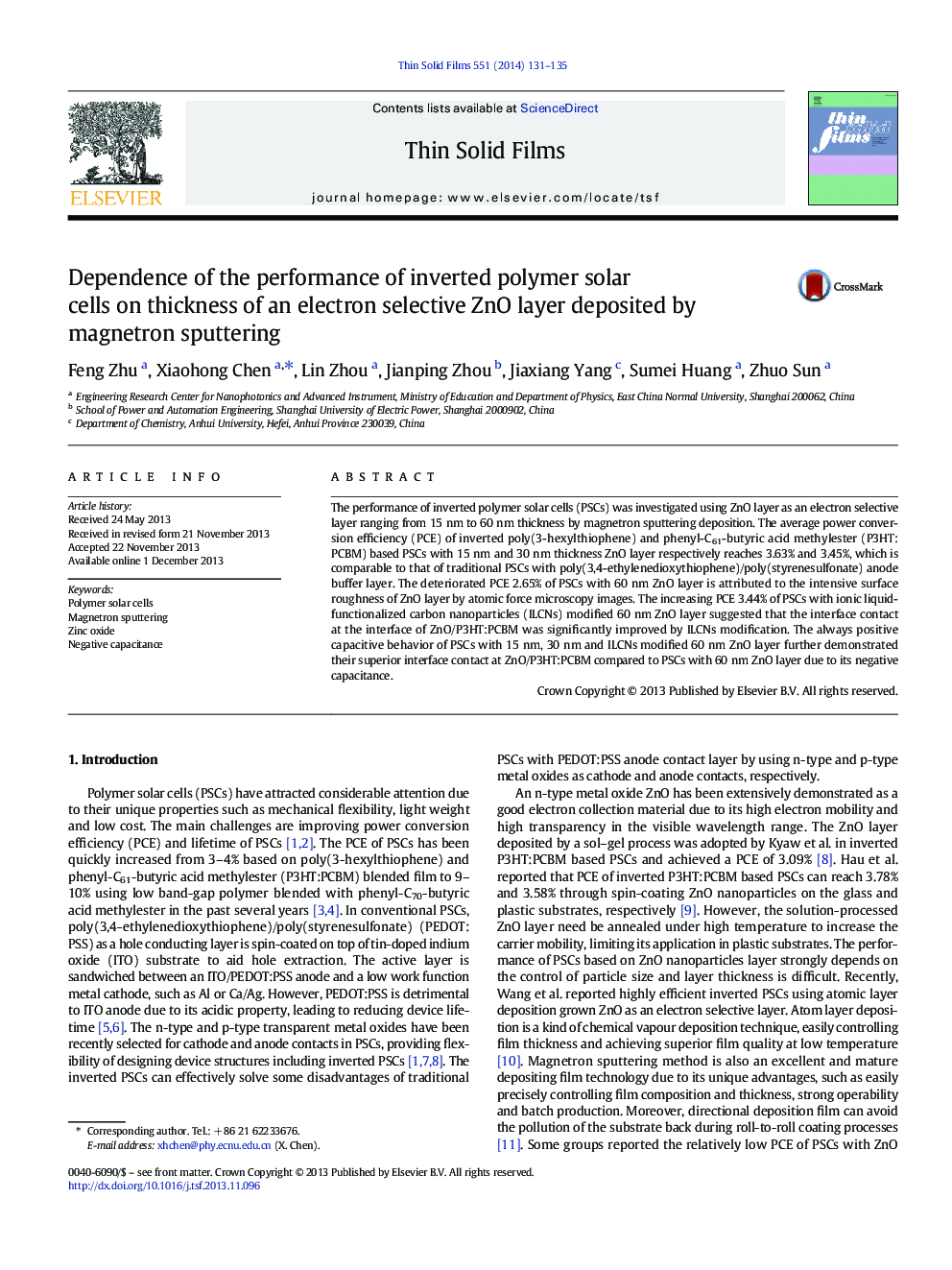| Article ID | Journal | Published Year | Pages | File Type |
|---|---|---|---|---|
| 1665603 | Thin Solid Films | 2014 | 5 Pages |
•ZnO electron selective layers were deposited by magnetron sputtering.•Performance of polymer solar cells (PSCs) is closely related to ZnO film thickness.•ZnO surface roughness was gradually increased with increasing ZnO film thickness.•Intensive roughness of ZnO layer results in deteriorated performance of PSCs.
The performance of inverted polymer solar cells (PSCs) was investigated using ZnO layer as an electron selective layer ranging from 15 nm to 60 nm thickness by magnetron sputtering deposition. The average power conversion efficiency (PCE) of inverted poly(3-hexylthiophene) and phenyl-C61-butyric acid methylester (P3HT:PCBM) based PSCs with 15 nm and 30 nm thickness ZnO layer respectively reaches 3.63% and 3.45%, which is comparable to that of traditional PSCs with poly(3,4-ethylenedioxythiophene)/poly(styrenesulfonate) anode buffer layer. The deteriorated PCE 2.65% of PSCs with 60 nm ZnO layer is attributed to the intensive surface roughness of ZnO layer by atomic force microscopy images. The increasing PCE 3.44% of PSCs with ionic liquid-functionalized carbon nanoparticles (ILCNs) modified 60 nm ZnO layer suggested that the interface contact at the interface of ZnO/P3HT:PCBM was significantly improved by ILCNs modification. The always positive capacitive behavior of PSCs with 15 nm, 30 nm and ILCNs modified 60 nm ZnO layer further demonstrated their superior interface contact at ZnO/P3HT:PCBM compared to PSCs with 60 nm ZnO layer due to its negative capacitance.
